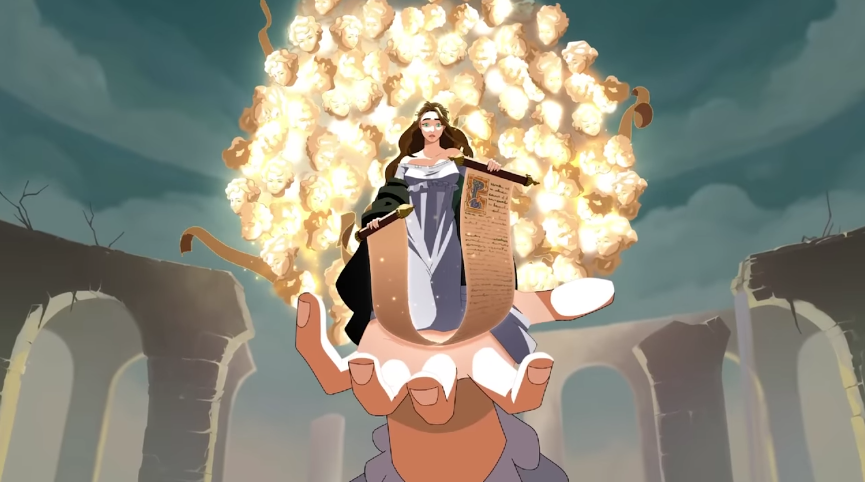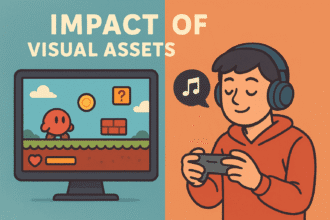Penance Unleashed: Blasphemous 2 Game
As a big fan of the Metroidvania genre, the 2019 debut of Blasphemous left me pleasantly surprised and yearning for more of its disturbing, beautiful world. Though it seemed to lean more into its combat-focused approach and less on the backtracking tropes the genre is known for, I couldn’t get enough of its intoxicating art direction and unforgiving combat. After four years since its predecessor’s release, Blasphemous 2 has descended from the heavens, strapping us back into the guilt-stricken shoes of the Penitent One. But does the sequel improve on the shortcomings of what came before it?
Every Think About Blasphemous 2 Game
Pros
- Gorgeously pixelated art style
- A captivating and emotional soundtrack
- Tight, fluid controls for platforming
Cons
- Combat can sometimes be sluggish
- Repetitive and predictable enemies
- Story demands a lot to fully grasp
Introduction
While that could have been distracting, Blasphemous excels at creating a chilling atmosphere. The first time you see the Penitent One, he is surrounded by a pile of corpses with matching capirote helmets poking out from the top of the human rubble. Right away, I knew this would be a somber, unforgiving journey. The eery, melancholic tone naturally reminded me of Castlevania games, only bloodier and far more sadistic. The stunning pixel art gives Blasphemous a retro aesthetic, but the detail-obsessed animations are all the more modern — and spine-chilling.
Each area on the sprawling map has a mostly unique batch of foes roaming the halls. There are some repeats and reskins, but generally, the enemies at least look different. The snowcapped mountains hold ghouls that spring up beneath the icy surface and wall sculptures that reach out to swipe you with their hands. The library features floating heads and decrepit men boomeranging weighty tomes your way. The convent houses a variety of baddies wearing religious garb, including one who swings an ornate metal container. Only after she pummeled me multiple times did I notice the moving limbs protruding from under the lid. The devil is in the detail, as they say. And the details here are downright devilish
Guilty As Charged
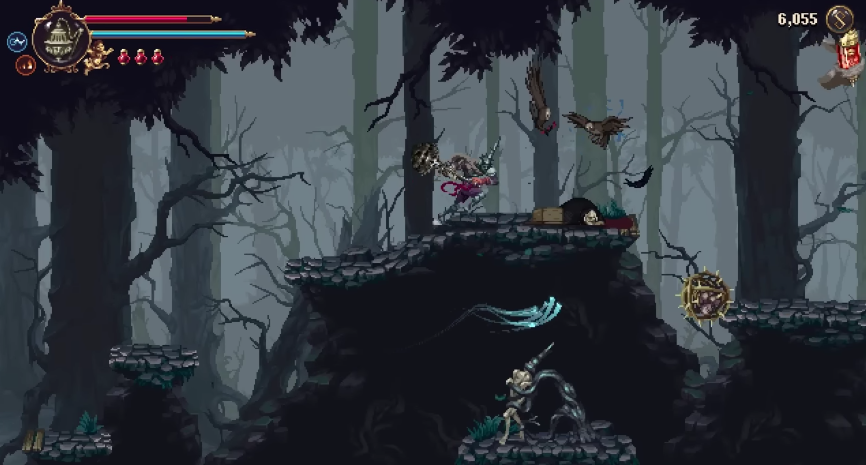
Once again, dawning the absurdly pointy helmet of the Penitent One, Blasphemous 2 thrusts you back into the world of Cvstodia and picks up right where the Wounds of Eventide DLC left off. While the world heralds the return of the Miracle, our protagonist is tasked with preventing the birth of a new miracle child through countless bouts of pain, torment, and sacrifice.
And that’s about as far as I can describe the story of Blasphemous 2 as, much like its predecessor, its lore and plotlines are mostly hidden within cryptic item descriptions and ambiguous conversations between its many unique NPCs. That’s not to take away from the game’s story, as I’m sure it’s lovely, but I can only pretend to follow along while glazing over Old English terminology for so long. Blasphemous 2 sets out to be a tightly packed and dense Metroidvania. For interested players, the story is just a cherry on top.
Sinners and Saints
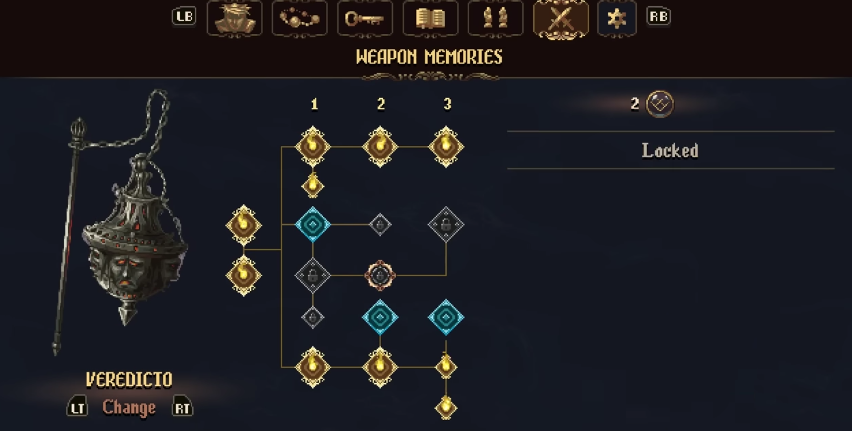
Blasphemous 2 introduces several new elements of both combat and traversal with the three unique weapons the Penitent One will acquire throughout his travels; the ‘Ruego Al Alba,’ a one-handed blade closely resembling the Mea Culpa from the previous game; the ‘Veredicto’, a massive flail capable of heavy damage and fire attacks; and ‘Sarmiento and Centella’, a unique sword and dagger pair infused with lightning-fast attacks.
In addition to boasting their own unique move sets and upgradable skill trees, the three weapons provide the Penitent One with new methods of navigating throughout the world of Cvstodia. Slamming the ground with Ruego Al Alba emits blood waves that can destroy “living” walls and doors—poking mirrored statues with Sarmiento and Centella cause the Penitent One to blink and phase through various obstacles. The Veredicto can be swung at large bells that pulsate sound waves, causing platforms to solidify temporarily.
While you can instantly cycle between the three weapons on the fly, you likely won’t be doing that in the middle of combat. Instead, you’ll be conquering the now-accessible platforming puzzles that begin to open up as the Penitent One unlocks new abilities like air-dashing and double-jumping.
Also Read- Chivalry 2 Review: Is It Worth Playing?
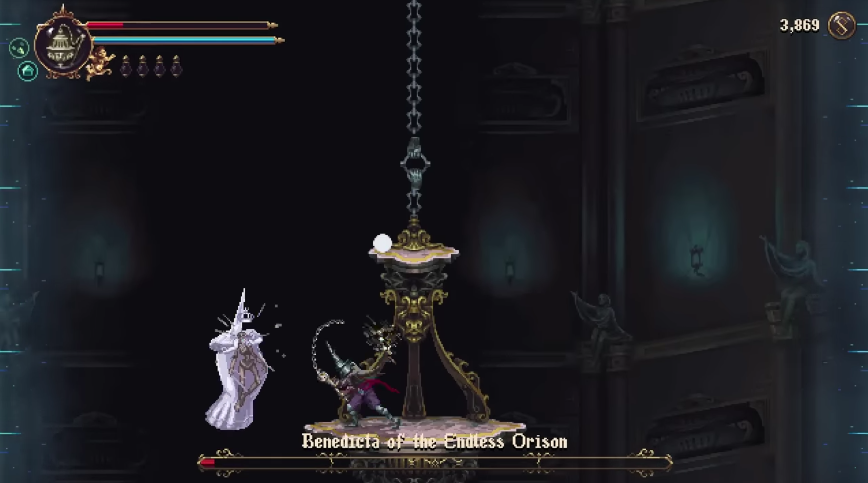
The folks over at The Game Kitchen have crafted yet another gorgeous world, drenched in religious Spanish influence and highlighted with macabre and gothic flair. In typical Metroidvania fashion, the sprawling map invites exploration in every which way, leading you through its variety of memorable destinations while often teasing you with slightly out-of-reach items and alternate pathways. While the first few zones may not be as noteworthy as I’d have liked, most of the game’s uniquely designed areas left favorable impressions that I won’t forget anytime soon.
The Final Judgement
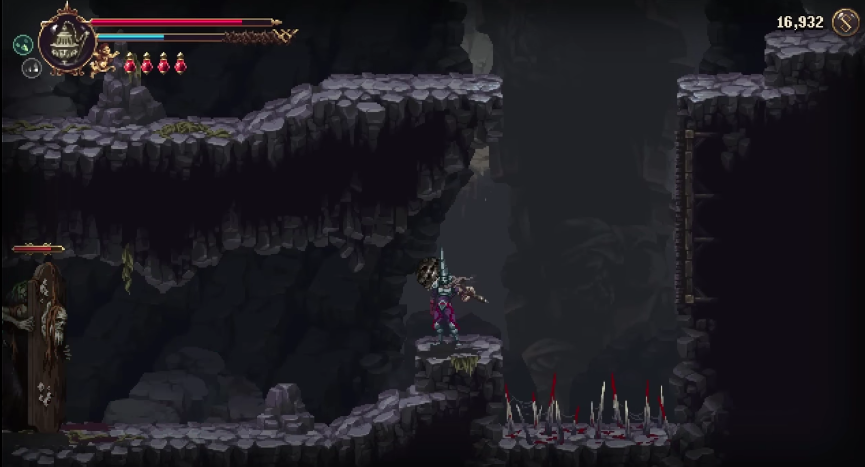
Blasphemous 2 understands what made its first entry tremendous and improves on a successful formula. Innovating just enough on its previous combat elements while adding a larger, more deserving portion of Metroidvania love, it’s a dish that The Game Kitchen should be proud to serve. It may not be the best in the genre, but it’s a damn good one and is an experience both newcomers and veterans will thoroughly enjoy.
The Verdict
A creepy and unsettling action-platformer, Blasphemous has an eery atmosphere, gorgeous pixel art, and intricate animations that never fail to impress. The combat can be satisfying, but relies too heavily on memorization, which makes backtracking through its non-linear world eventually turn stale. And while the visual variety at least keeps things looking fresh, superfluous and poorly implemented upgrade mechanics keep Blasphemous from having the amount of depth seen in many other games across the genre. It’s still an enjoyable Metroidvania, just not an all that memorable one.

